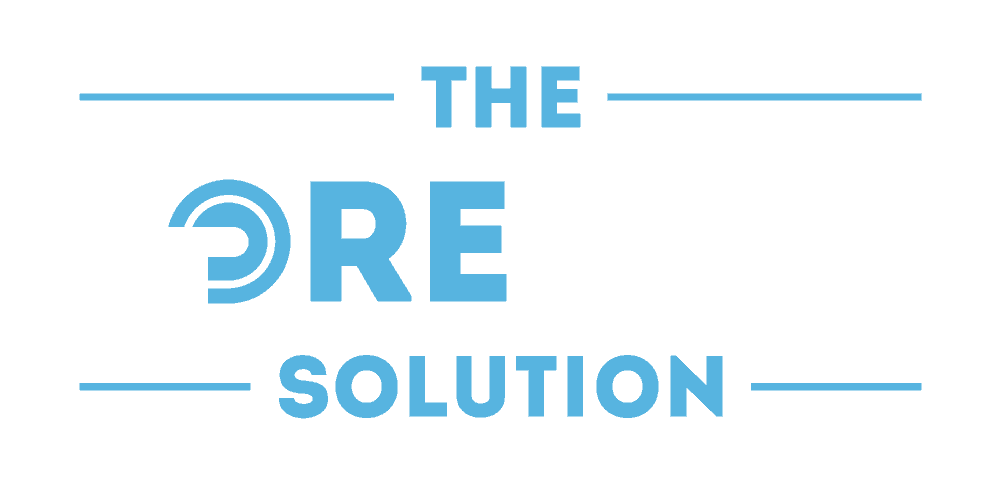Hybrid vs Remote Work: What To Expect In 2025 (& 6 Things To Consider)?
The debate of hybrid vs remote work is at an all-time high.
While COVID-19 changed many things, forcing employees to work remotely may have been the most significant.
Professionals no longer had to choose work or an at-home life; for the first time in decades, they could enjoy both. They found working remotely to be sustainable and preferable to spending long hours on commute and thousands of dollars on gas.
Now, almost five years later, with ⅓ of employees working from home, companies are itching to refill their office spaces once again, even though 83% of the global workforce thinks a hybrid model is ideal.
And with a recent poll indicating 41% of employees would rather find a new job than return to the office, many companies are left wondering: do we cut our losses or compromise?
In this article, we’ll lay down the facts of remote vs hybrid working environments in hopes of shedding some light on what 2025 will bring to the workforce.
Is hybrid working the same as remote working?
In finding a solution, it is essential to understand the difference between them and explore how both options can benefit employers and employees equally.
Hybrid Work
This type of work environment already exists in many fields. Businesses impacted by the pandemic opted for this option to keep their companies productive and maintain their economy. Recently, this option has become favored because employers can communicate with their employees more effectively and enforce structure. Hybrid work is a flexible and safe option, especially for companies not equipped to handle a strictly remote work environment.
Remote Work
In a remote work setting team members communicate remotely via email, Zoom, and phone. With the advancements in cloud storage, tools like Zoom and Google Meets, and affordable workspaces like Google Workspace, the possibilities for remote workspaces are endless. Employers and employees can create schedules, work from anywhere, and save money by eliminating commute costs. Remote work can also bring in more diverse team members and can save companies money if they hire talent from overseas.

Before and After the Pandemic
Hybrid and remote work were less common before the pandemic and were primarily associated with specific industries or roles. Flexibility was rare; employees had to request this arrangement and prove they could work independently. Some sectors that used these methods are:
- Tech Industry
- Freelancing and Contract Work
- Consulting
- Sales and Customer Service
- Education and Tutoring
- Creative Fields
Limited availability was due to the fact most companies didn’t need remote work or were concerned with productivity, lack of oversight, or fear of lack of structure.
The pandemic forced companies and employees from different fields of work to shift to remote work abruptly to keep business flowing and proved lucrative. Now that everyone has adapted, this method has changed the idea and standards of a typical workplace.
The Benefits Of Remote Work
Here are the key benefits of remote work that highlight its transformative impact on businesses and employees:
- Flexibility and Hybrid Models: Remote work enables hybrid options, providing employees with greater flexibility and balancing professional and personal lives.
- Diverse Talent Pool: Companies can attract a broader, more inclusive workforce, tapping into talent across geographies and demographics.
- Employee Productivity and Morale: Customized work environments boost employee satisfaction and productivity.
- Global Business Reach: Employers can expand their influence, connecting with talent and opportunities on a national and global scale.
- Cost Efficiency: Remote work reduces overhead expenses, allowing businesses to reinvest in innovation and growth.
- Inclusivity and Accessibility: Remote models enable individuals with varying needs or constraints to participate fully in the workforce.
- Redefining Collaboration: The shift to remote work transforms traditional job markets, fostering new ways to work and collaborate.
- Strategic Advantage: Remote work drives progress, connection, and opportunities for industries and individuals alike.
Employer Frustrations with Remote Workers
Here are several factors contributing to employer frustrations with remote work:
- Miscommunication and Team Management: Employers often face challenges in managing teams effectively and ensuring clear communication.
- Lack of Unity: Maintaining a cohesive sense of unity among remote teams can be difficult.
- Accountability and Monitoring: Employers find it harder to monitor employees and hold them accountable without in-person oversight.
- In-Person Insight: Being in the office allows for better assessment of employees’ time management, commitment, and productivity.
- Technology Issues: Poor internet connections, software glitches, and inadequate equipment disrupt productivity.
- Company Culture: Without daily in-person interactions, instilling company values, maintaining engagement, and fostering loyalty become more difficult.
- Time Management and Deadlines: Remote workers may struggle with home distractions, leading to poor time management and missed deadlines.
These challenges often lead employers to advocate for a return to the office.

How can hybrid work keep remote work thriving?
Hybrid work can ensure a balance between independence and a team connection. Combining the advantages of both in-office and remote environments makes hybrid workplaces ideal and has the potential to keep remote options available and thrive. Structure and flexibility, improved work-life balance, access to resources, and adaptability benefit everyone.
Employers are more in tune with their company, and employees have several options for getting the job done and support for career development, as in-office time provides opportunities for mentorship, impromptu learning, and networking. Time in the office grants access to tools and technology that may not be available at home, and a hybrid workplace both provides these resources without eliminating the flexibility of remote work.
What to expect in 2025?
Workplace dynamics will continue to evolve in 2025. Global talent, remote teams, and data-driven decision-making will take precedence. This is a big help because data analytics will be more prominent in shaping HR strategies, operations, and decision-making processes. Employers should use data analytics to measure employee productivity, engagement, and other key performance indicators.
We can also expect to see an increased focus on employee well-being. Workplaces will prioritize mental health, work-life balance, and holistic wellness programs based on the growing awareness of employee well-being’s impact on productivity.
Hybrid work will likely become the default for many industries. In-office and remote work will be blended in and tailored to individual employees’ needs. Companies will need to invest in digital infrastructure, collaboration tools, and strategies for maintaining team culture and productivity. Employers must also create flexible policies that cater to different work styles and preferences, which may enhance employee retention and satisfaction.
What does this mean for employers?
Employers will have to adapt to a more complex and technology-driven workforce. Companies will face challenges, from revamping their hiring practices to keeping up with AI. Instead of relying on credentials, upskilling programs, mentorship, and internal training will become tools for developing organizational talent. This will also help with the advancements in AI because upskilling will have to be done to keep pace with technology, focusing on creativity, problem-solving, and emotional intelligence. Automation will require businesses to reevaluate job roles and the potential creation of new jobs while looking at the possibility of restructuring existing ones.
Diversity, Equity, and Inclusion (DEI) Initiatives will remain an arch to corporate strategies as employees increasingly demand workplaces that reflect fairness, equality, and representation. Integrating meaningful DEI policies that go beyond superficial changes will involve continuous learning, transparent communication, and equitable hiring and promotion practices. All of these factors are highlighted within the company culture and brand reputation.
Businesses can manage this rapidly changing work dynamic well by embracing flexibility, prioritizing well-being, and investing in new technology and skills.

Things to Consider When Choosing a Hybrid or Remote Workplace
How does the company maintain its culture with a remote or hybrid setup? When considering which route to take, you should start here. Always make sure there are deliberate efforts to foster collaboration, communication, and a sense of belonging among employees. Look for organizations that offer virtual team-building activities, regular check-ins, and clear communication channels to keep everyone connected.
Here are some things to keep in mind when looking to start with a new company:
- Work Flexibility: An excellent hybrid or remote workplace offers clear policies that allow flexibility while ensuring productivity and accountability.
- Is there flexibility in adjusting schedules based on personal needs?
- How much flexibility does the company offer regarding working hours and locations?
- Are there set expectations for being online during specific hours?
- Communication Norms: Look for or establish a company that prioritizes transparent and inclusive Communication.
- How does the organization handle communication between remote and in-office teams?
- Can remote employees feel excluded from decision-making or critical discussions?
- Is there a system for remote workers to be equally involved in meetings and updates as in-office staff?
- Work-Life Balance: Companies should respect work-life balance. They would have clear policies on working hours and discourage excessive overtime, especially for remote workers.
- Office Space Availability: Clarify the expectations for in-office work and check if the company’s office space encourages collaboration without requiring a full-time presence.
- Compensation Benefits: Companies that value their hybrid or remote workers should offer tailored benefits.
- Home Office Stipends
- Internet Allowance
- Wellness programs
- Mental health support
- Ergonomic equipment
- Co-working space memberships
- Competitive pay based on location
- Access to Resources: Ensure the organization has systems for remote employees to access resources, HR support, and technical assistance easily.
- Does the company provide remote staff with the necessary access to information?
- Will there be support teams?
- Are there transparent processes for accessing help when working remotely?
When choosing a hybrid or remote job, ensure the company has good flexibility, communication, career growth, and support policies. It’s critical to find a place that allows remote work and has the proper setup and culture to make it work well.
How can employers prepare?
Preparing for a hybrid working environment requires thoughtful planning to ensure flexibility, productivity, and inclusivity for all employees. Here are key strategies companies can implement:
- Establish Clear Policies: Develop comprehensive guidelines for hybrid work arrangements, including schedules, expectations, and communication norms. Transparency ensures everyone understands how the system works and what is expected.
- Leverage Technology: Invest in reliable collaboration tools, project management software, and virtual meeting platforms to bridge the gap between in-office and remote employees. Ensure all employees have access to the necessary equipment and training to use these tools effectively.
- Redesign Workspaces: Adapt office layouts to support hybrid setups, such as creating shared workstations, quiet zones, and collaboration spaces. This promotes flexibility while accommodating team collaboration.
- Foster Communication: Encourage open, consistent communication through regular check-ins, team meetings, and updates. Utilizing multiple communication channels ensures inclusivity for both remote and in-office workers.
- Prioritize Employee Well-Being: Support mental health and work-life balance by offering wellness programs, flexible hours, and resources to manage stress. Ensuring employees feel valued fosters engagement and loyalty.
- Reinforce Company Culture: Use virtual team-building activities, hybrid social events, and consistent messaging to maintain a strong sense of community and shared values.
- Offer Training and Support: Provide training for managers to lead hybrid teams effectively and resources for employees to thrive in this new model. Encourage feedback to improve systems over time.
By addressing these areas, companies can create an efficient, inclusive hybrid work environment that benefits both employees and employers.
Embrace Change
2025 is going to be an exciting time for the global job market. What started as a test of desperation has changed the workforce completely.
No longer do employees have to choose between their home and careers they have the opportunity to have both, the balance resulting in more productive team members.
Companies for their part, can expand their hiring pool by choosing the most qualified and talented individuals for the job regardless of their location, harnessing the talent of the right people at the right time.
Although hybrid vs remote work may not be an option for many, those who can take advantage of the technology available to facilitate the collaboration can foster a competitive edge.
All it takes to create a work environment that suits you is the right tools, and intentional structure and the willingness to embrace change.
If this article has inspired you, please subscribe to our newsletter to be alerted when the next piece is released. You can also support the continued creation of this content by making a tax-deductible donation.




